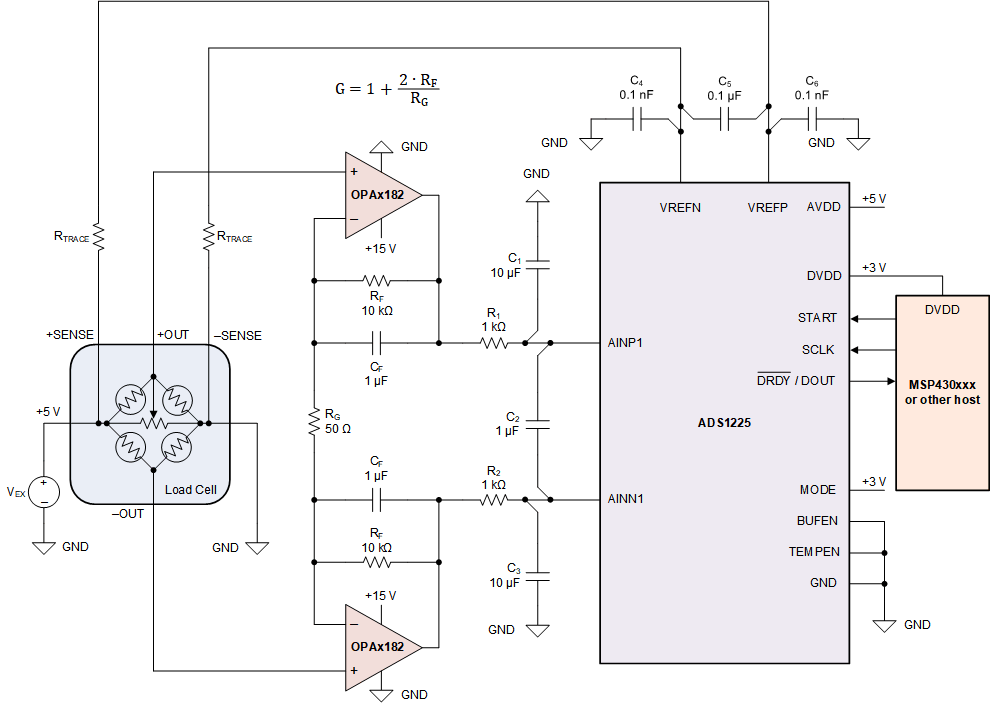SBOS936E November 2019 – August 2022 OPA182 , OPA2182 , OPA4182
PRODMIX
- 1 Features
- 2 Applications
- 3 Description
- 4 Revision History
- 5 Device Comparison Table
- 6 Pin Configuration and Functions
- 7 Specifications
- 8 Detailed Description
- 9 Application and Implementation
- 10Device and Documentation Support
- 11Mechanical, Packaging, and Orderable Information
Package Options
Mechanical Data (Package|Pins)
Thermal pad, mechanical data (Package|Pins)
Orderable Information
9.2.3.1 24-Bit, Delta-Sigma, Differential Load Cell or Strain Gauge Sensor Signal Conditioning
The OPA2182 is used in a 24-bit, differential load cell or strain gauge sensor signal conditioning system alongside the ADS1225. The OPA2182 amplifier is configured in a two-amp instrumentation-amplifier (IA) configuration, and is band-limited to reduce noise and allow heavy capacitive drive. The load cell is powered by an excitation voltage (denoted VEX) of 5 V and provides a differential voltage proportional to force applied. The differential voltage can be quite small and both outputs are biased to VEX / 2.
In this example, the OPA2182 is employed here because of the excellent input offset voltage (0.45 µV) and input offset voltage drift (0.003 µV/°C), the low broadband noise (5.7 nV/√Hz) and zero-flicker noise, and excellent linearity and high input impedance. The two-amp IA configuration removes the dc bias and amplifies the differential signal of interest and drives the 24-bit, delta-sigma ADS1225 analog-to-digital converter (ADC) for acquisition and conversion. The ADS1225 features a 100-SPS data rate, single-cycle settling, and simple conversion control with a dedicated START pin.
 Figure 9-7 24-Bit Differential Load Cell
or Strain Gauge Sensor Signal Conditioning Schematic
Figure 9-7 24-Bit Differential Load Cell
or Strain Gauge Sensor Signal Conditioning Schematic